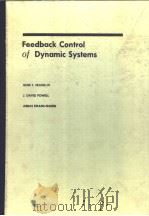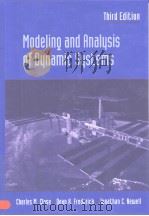《DIGITAL CONTROL OF DYNAMIC SYSTEMS》
| 作者 | GENE F.FRANKLIN J.DAVID POWEL 编者 |
|---|---|
| 出版 | 未查询到或未知 |
| 参考页数 | 335 |
| 出版时间 | 没有确切时间的资料 目录预览 |
| ISBN号 | 0201104075 — 求助条款 |
| PDF编号 | 811800748(仅供预览,未存储实际文件) |
| 求助格式 | 扫描PDF(若分多册发行,每次仅能受理1册) |
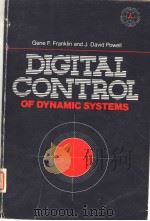
1Introduction1
1.1 Problem definition1
1.2 Example systems for study4
1.3 Overview of design approach5
1.4 Summary7
Suggestions for further reading7
Problems and exercises9
2Linear Discrete Dynamic Systems Analysis: The z-Transform11
2.1 Introduction11
2.2 Linear difference equations11
2.3 The discrete transfer function14
2.4 Signal analysis and dynamic response26
2.5 Properties of the z-transform36
2.6 Regions of convergence and the inverse integral41
2.7 Implementation of difference equations in real time44
2.8 Summary48
Appendix to Chapter 248
Problems and exercises50
3Discrete Equivalents to Continuous Transfer Functions:The Digital Filter53
3.1 Introduction53
3.2 Design of digital filters by numerical integration54
3.3 Pole-zero mapping61
3.4 Hold equivalence62
3.5 Butterworth and ITAE equivalents66
3.6 Summary73
Problems and exercises73
4 Sampled Data Systems77
4.1Introduction77
4.2 Sampling as impulse modulation77
4.3 Sampled spectra and aliasing79
4.4 Data extrapolation and impostors82
4.5 Block diagram analysis of sampled data systems85
4.6 Summary92
Problems and exercises92
5Design of Digital Control Systems Using Transform Techniques95
5.1Introduction95
5.2 z-plane specifications of control system design96
5.3 Design by discrete equivalent105
5.4 Root locus in the z-plane108
5.5 Frequency response methods: The w’-transform113
5.6 Direct design method of Ragazzini119
5.7 A second example: Temperature control via mixing124
5.8 Summary126
Problems and exercises127
6 Design of Digital Control Systems Using State-Space Methods131
6.1Introduction131
6.2 System representation131
6.3 Control-law design139
6.4 Estimator design145
6.5 Regulator design150
6.6 Servodesign: Introduction of the reference input by feedforward control155
6.7 Controllability and observability164
6.8 Summary171
Appendix A to Chapter 6171
Appendix B to Chapter 6178
Problems and exercises181
7 Quantization Effects185
7.1Introduction185
7.2 Deterministic analysis of roundoff variables185
7.3 Stochastic analysis of roundoff variables190
7.4 Effects of roundoff of parameters195
7.5 Limit cycles and dither198
7.6 Summary201
Appendix to Chapter 7201
Problems and exercises203
8 System Identification207
8.1Introduction and problem definition207
8.2 Least squares216
8.3 Recursive least squares220
8.4 Stochastic least squares224
8.5 Maximum likelihood234
8.6 Numerical search for the maximum likelihood estimate240
8.7 Summary244
Problems and exercises244
9Multivariable and Optimal Control247
9.1 Introduction247
9.2 Decoupling247
9.3 Optimal control251
9.4 Optimal estimation259
9.5 Example of multivariable control265
9.6 Summary270
Appendix to Chapter 9270
Problems and exercises271
10 Sample Rate Selection275
10.1 Introduction275
10.2 Tracking effectiveness in terms of bandwidth, time response, and roughness275
10.3 Disturbance rejection278
10.4 Sensitivity to parameter variations280
10.5 Effect of prefilter design283
10.6 Summary285
Problems and exercises288
Appendix A: Examples291
A.1 Single-axis satellite attitude control291
A.2 A servomechanism for antenna azimuth control293
A.3 Tank fluid temperature control296
A.4 Control through a flexible structure298
A.5 Control of a pressurized flow box for a paper machine300
Appendix B: Tables303
B.1 Properties of z-transforms303
B.2 Table of z-transforms304
B.3 w-plane transfer functions306
Appendix C: Matrix Analysis307
C.1 Determinants and the matrix inverse307
C.2 Eigenvalues and eigenvectors309
C.3 Similarity transformations310
C.4 The Cayley-Hamilton theorem313
Appendix D: Summary of facts from the Theory ofProbability and Stochastic Processes315
D.1 Random variables315
D.2 Expectation317
D.3 More than one random variable319
D.4 Stochastic processes321
References327
Index331
《DIGITAL CONTROL OF DYNAMIC SYSTEMS》由于是年代较久的资料都绝版了,几乎不可能购买到实物。如果大家为了学习确实需要,可向博主求助其电子版PDF文件。对合法合规的求助,我会当即受理并将下载地址发送给你。
高度相关资料
-
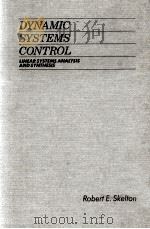
- DYNAMIC SYSTEMS CONTROL
- 1988 JOHN WILEY & SONS
-
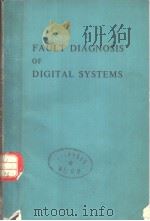
- FAULT DIAGNOSIS OF DIGITAL SYSTEMS
- WILEY-INTERSCIENCE
-

- DIGITAL CONTROL OF DYNAMIC SYSTEMS SECOND EDITION
- 1990 ADDISON-WESLEY PUBLISHING COMPANY
-
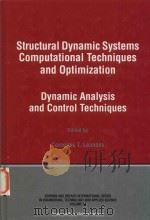
- STRUCTURAL DYNAMIC SYSTEMS COMPUTATIONAL TECHNIQUES AND OPTIMIZATION DYNAMIC ANALYSIS AND CONTROL TE
- 1999 GORDON AND BREACH SCIENCE PUBLISHERS
-

- Direct digital control systems application·commissioning
- 1999 Kluwer Academic Publishers
-
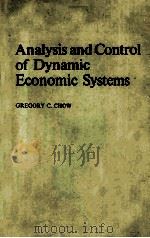
- ANALYSIS AND CONTROL OF DYNAMIC ECONOMIC SYSTEMS
- 1975 JOHN WILEY & SONS
-

- THE INVERTIBILITY OF DYNAMIC SYSTEMS WITH APPLOCATION TO CONTROL
- 1963 DEPT. OF COMMERCE
-
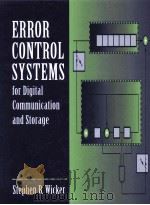
- ERROR CONTROL SYSTEMS FOR DIGITAL COMUNICATION AND STORAGE
- 1995 PRENTICE HALL
-
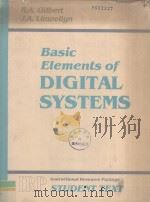
- Basic Elements of DIGITAL SYSTEMS
- 1982 Instrument Society of America
-

- INTRODUCTION TO DIGITAL CONTROL SYSTEMS
- 1985 MACMILLAN PUBLISHING COMPANY
提示:百度云已更名为百度网盘(百度盘),天翼云盘、微盘下载地址……暂未提供。➥ PDF文字可复制化或转WORD


